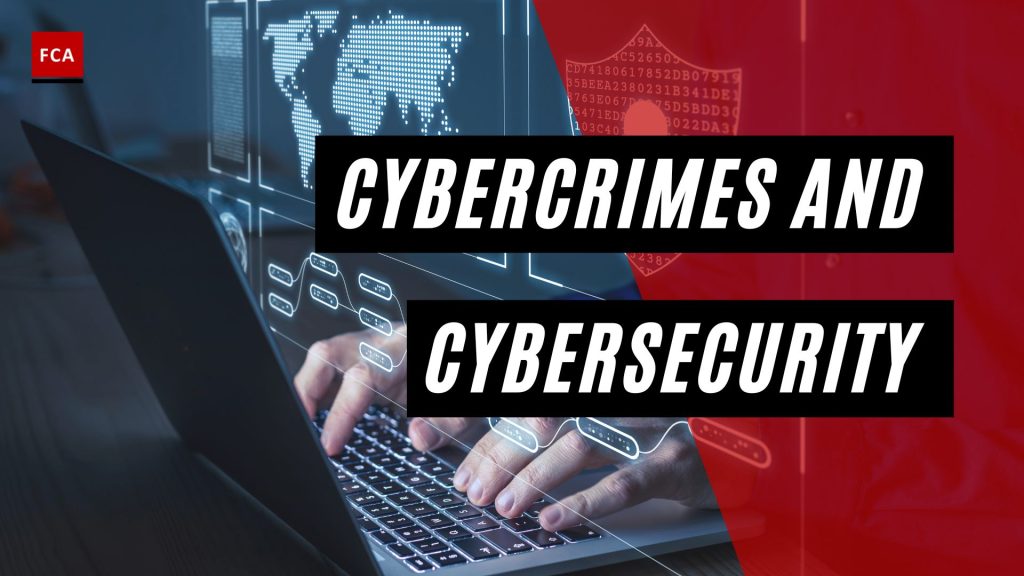Cybercrimes and cybersecurity are two sides of the same coin. Cybersecurity involves protecting computer systems and networks from unauthorized access, theft, damage, or any other malicious activities. On the other hand, cybercrime involves committing criminal activities such as stealing personal information, financial fraud, hacking, or spreading malware using computers or the internet.
Cybercrime is a growing threat to individuals, businesses, and governments worldwide. With the advancement of technology and the increasing use of the internet, cybercriminals have become more sophisticated and organized, making it easier for them to breach security measures.
To combat cybercrime, cybersecurity measures need to be put in place to protect against potential threats. Cybersecurity measures include firewalls, antivirus software, encryption, access control, and other security tools that prevent unauthorized access, mitigate attacks, and detect suspicious activity.
However, cybersecurity is not foolproof, and cybercriminals continuously adapt to new security measures. Therefore, it is essential to stay vigilant and continuously update security measures to stay ahead of cybercriminals.

Overview of Cybercrimes and Cybersecurity
Cybercrime is a criminal activity performed by criminals to generate illegal funds or destroy the information asset of an organization or institution. Cybercrime incidents occur digitally, where criminals use different penetration techniques to digitally penetrate into or gain access to an organization’s confidential information or data for fraudulent purposes or ransom money.
Cybercrimes may also be performed by the employees or stakeholders of the organization, where internal employees or staff may gain access to confidential information for fraudulent purposes or share such information with the competitor against any personal financial advantage.
Cybersecurity is the practice of protecting systems, laptops, computers, networks, servers, electronic devices, information, and data from possible malicious attacks by hackers. Cybersecurity is also known as information security or information technology security. The purpose is to maintain the integrity and privacy of data. Cybersecurity covers user data access rights, and users must take permission when accessing any information source.
Cybersecurity measures also cover the development and maintenance of a robust disaster recovery and business continuity plan to minimize the effects of cyberattack incidents. It defines how the organization shall respond to the cyberattack incident to avoid loss of exposure to information, data, or operations.
End-user awareness and education address unpredictable cybersecurity risks and threats because anyone in the organization can cause introduce a virus into the network or system by failing to follow security measures and practices implemented in the organization and expected to be complied with by the users. Education, for example, requires users not to open or delete suspicious emails or email attachments, not to use unidentified USB drives in systems, etc.

Hacking is unauthorized access to an organization’s servers, networks, information systems, or applications to manage its business and operational activities. Hackers are outsiders who plan to penetrate an organization’s networks to access confidential or critical information about the organization. Critical information may be the detail of organizations’ customers, internal strategic information, or any other sensitive data or information stored in the information systems or servers of the organization.
After getting access to the information, hackers steal it and demand ransom money from the organization to restore the stolen information. Cyberattacks cause employees to be unable to access their systems and information, leading them to a static state where they are at the mercy of the hackers, who gained control over their systems and application.
The board of directors is primarily responsible for providing appropriate oversight to the employees and managing the entity and activity level risks, including cybersecurity risks and threats. Cybersecurity governance gives a strategic overview of how an organization develops and implements internal security controls to ensure the security of information assets and information systems. It includes defining the cybersecurity risk appetite, establishing an information security committee to oversee the threats and cybersecurity risks, and building ownership levels and accountabilities.

Final Thoughts
Cybercrime refers to criminal activities that are carried out using computers, the internet, and other digital devices. It includes a wide range of illegal activities such as hacking, identity theft, online harassment, phishing, and cyberstalking. Cybercriminals use advanced technology and sophisticated tactics to target individuals, businesses, and governments for financial gain, espionage, or disruption of operations.
Cybersecurity, on the other hand, refers to the measures taken to protect digital devices, networks, and information from unauthorized access, theft, and damage. It involves using a combination of technology, policies, and best practices to secure computer systems, networks, and data from cyberattacks.
Cybersecurity has become increasingly important as more businesses and individuals rely on digital devices and the internet for communication, transactions, and storage of sensitive data. Cybersecurity threats can come from various sources, including hackers, viruses, and malware, and can cause significant financial, reputational, and legal damage.
Effective cybersecurity strategies involve a range of tactics, including risk assessment, network monitoring, access control, and incident response planning. In addition to technical solutions, cybersecurity also involves educating individuals and organizations on safe internet practices and promoting a culture of security awareness.








